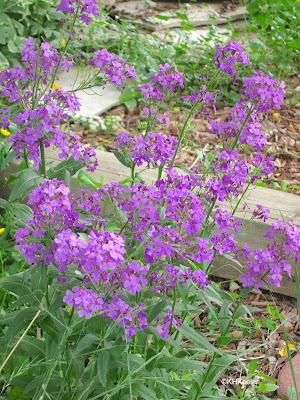Walking in Boulder (earlier blog), many of the "wildflowers" were European species that have become naturalized in the U.S. Some are sufficiently common to be recognized as weeds. And yet, they can be beautiful.
Suppress your attitude toward these plants and notice them as flowers, |
purple salsify, Tragopogon porrifolius (sunflower family Asteraceae) |
I find it hard to turn off "invasive species!" when I see these, but they are pretty.
Salisfy was introduced because it was a vegetable, especially the root but the rest of the plant is edible too.
Musk thistle came accidentally, most likely in ballast water in the hold of a ship.
 |
| musk thistle, Carduus nutans |
(sunflower famly Asteraceae)
Yarrow (Achillea millefolium sunflower family Asteraceae) can be a weed, a garden flower, a native wildflower, and a naturalized alien, depending on your view point. It has been used medicinally for millennia so people intentionally carried it all over the world with them. It self-seeds well and shows up where it wasn't invited, but I like it.Field bindweed (Convolvulus arvensis, morning glory family, Convolvulaceae) on a fence in Toronto. Cheerful, aren't they? These are believed to have arrived as a contaminant of seeds, wheat in particular.
 |
| field bindweed, Convolvulus arvensis |
Hound's tongue, Cynoglossum officinale (borage family, Boraginaceae). This, like bindweed, was probably a seed contaminant, riding along in imported seeds. The leaves have irritating hairs and the plant spreads aggressively, but the flowers are quite attractive.
 |
| hound's tongue, Cynoglossum officinale |
Dandelions (Taraxacum officinale sunflower family, Asteraceae) are certainly pretty, for all we persecute them. They were introduced to North America as vegetables; the root and leaves were eaten, the flowers went into dandelion wine.
 |
| dame's rocket, Hesperis matronalis |
Comments and corrections welcome.
Sources
I googled the plants to see what the internet said about their origins, especially
CABI Invasive Species Compendium linkFire Effects Information System (FEIS) link
USDA National Invasive Species Information Center link
Kathy Keeler, A Wandering Botanist
More at awanderingbotanist.com
Join me on Facebook: https://www.facebook.com/AWanderingBotanist


Hello! I book marked your blog years ago and I love checking it for well-researched articles. I often check it alongside the dozens of books I have because you almost always have additional information. I'm not a professional botanist but its a passionate hobby of mine so I love collecting information and lore on local plants, and your blog is a great place for that.
ReplyDelete-Olive from N.B. Canada